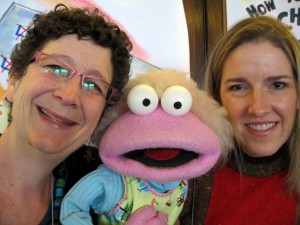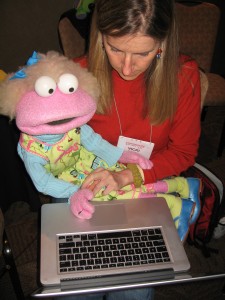Nice visual organization of useful/not so useful responses to negative comments online. Take a peek! Thanks @silkcharm / Laurel Papworth!
Category: facilitation
Online Community Still Crazy After All These Years
After months of trying to get our schedules aligned, I had the chance to be a guest at the IBM “CommunityBuilders” monthly call. These are hour long sessions where people who facilitate/manage/care about communities within and across IBM talk about things together.
I am a big fan of Luis Suarez, one of the hosts of these gatherings, so it was easy to say yes. Plus I know some of the IBM community builders -some over many many years, so this was a great opportunity to think together. It was the good folks at IBM who helped me actually see my own practice and it’s value in the late 90’s and I’m grateful.
Luis has his reflections up on his blog, so I thought it would be worth pointing to them and reflecting a bit myself. CommunityBuilders – Online Community Still Crazy After Years with Nancy White. (Luis, do we have a chat transcript too? There were lots of great comments and questions!)
If you have been involved with virtual communities and online facilitation, I bet it’s almost impossible not having come across the absolutely fabulous work on facilitating online communities Nancy has done, and shared across!, over the course of the years. Her work around Online Community Toolkit is probably one of those essential resources for any community manager, leader, facilitator out there who may want to get things started with their own online communities, or take existing ones into the next level of interactions. Her book, co-authored with Etienne Wengerand John Smith, on Digital Habitats – Stewarding Technology for Communities is probably what I would consider a bible on online facilitation, community building and community tooling…
It was an hour long session, where Nancy covered some of the basics behind the concept of Community (And how not everything out there, other groupings, may necessarily be a community), how both technology and community are walking through a rather thin line influencing one another, for the better, in defining how community members connect with one another and how those connections influence the path technology is following; and from there onwards she dived into an engaging conversation with the rest of the audience through a rather lively Q&A session covering a whole bunch of topics going from examples of effective community tooling, communicating efficiently with your community members, measuring the value of communities towards their stakeholders, biggest new challenges for online communities today, promoting and engaging activities for communities, etc. etc.
Thus I guess I better stop here, for now, and cut right to the chase, sharing with you folks the link to the materials, so that you can have a look right away and dive into them. The link to the video recording can be found over at “CommunityBuilders Monthly Call – Online Community Still Crazy After Years with Nancy White” (30 MB download) and you can download a copy of the slides over at Slideshare or start checking the deck through the embedded code below:
She probably doesn’t know this, but one of the reasons why I am so passionate about collaboration and online communities in general is due to her own contagious passion, expertise and know-how that she continues to share over the course of the years!
When I started getting interested in online communities there weren’t very many practitioners to talk with. Today it is a rich ecosystem. The evidence is everywhere. The practices have blossomed and diversified. We have gone beyond older notions of “community” and layered on “networks.” Look at the Community Managers Rountable (see their “State of…” report here), Gautam Ghosh’s guest post on Luis’ blog. The proof that this is a maturing field are everywhere – and the fact that no one of us can keep up with it all. I keep thinking I need to redesign my online facilitation workshop (which I have not offered for several years now – shame on me). But the territory is almost too rich. What a delight.
We didn’t get to the slides at the end of the deck – the “looking forward” stuff. I’d love to know what you think are the learnings agendas still in front of us for working in and with communities and networks. Hit the “comment” button and let me know!
Crosspost from NWWCoP: Twitter Chats and Tweetups
This is a crosspost from the Network Weavers Community of Practice!
On today’s full community “share fair” meeting the concept of tweetups and tweet chats came up. I mentioned that there is an open Google doc listing some of the more well known tweetups and I would share it, so I wanted to post that link and a few others here. In poking around, I found a few more lists (Meryl’s list was updated just last week!) and resources.
How to Run Twitter Chats
There are both technical and facilitation things to consider to effectively pull people into a coherent interaction on Twitter.
- Meryl’s tips and more tips.
- Maria Colacurcio 4 part how-to series, 1, 2, 3 and 4. She gets into all the details, including promoting a tweet chat and following up on chats. Sounds like she is a natural “closer of triangles” as we’ve talked about within the Network Weavers Community of Practice.
- Mashable’s Twitter Chat tips
Hashtags Resources
A hash tag (i.e. #nwwcop) is a way to aggregate tweets during a tweet chat and to aggregate tweets with other digital content with the same tag.
- A hashtag wiki
- Hashtags.org for searching on hashtags
How to Capture the Content of Twitter Chats
Here are just a few of the tools you can use as interfaces for the tweet chats themselves and to aggregate the content. See the “how-tos” above.
Strategy
I think the last bit of thinking — that really might be best considered first — is thinking about WHY you want to do a Twitter chat. Thinking about intent, about purpose, can be a productive precursor to planning and action. Smile. Visit some twitter chats. Experience them. Then think about your community and network. What would work? Twitter chats are inherently open – is that ok for you? Do you want to have a defined group, or attract people to the twitter chat topic? Food for thought, eh?
Chris Corrigan on the art of giving instructions
Just a quick post to point to a great piece of advice from the ever-wonderful Chriss Corrigan, The art of giving instructions: 7 practices for facilitators. Scan the snippet then, if you are a facilitator, read the whole thing. It is worth your time. Come to think of it, these apply for parents, bosses and anyone else.
I think one of the hardest things to do as a facilitator is master the art of giving instructions. Even for facilitators, public speaking can be a stressful experience, and there is nothing worse than trying to give instructions to a group while your knees are shaking and your mouth is dry. But for all facilitators, and and especially those of us who work with radically new ways of meeting, this is a whole art in itself. Giving instructions poorly leads to confusion and chaos and can quickly erode the trust of a group. Being too direct can shut people down and create a sterile meeting. The art is finding the space between the two.
What Suzie and I Learned (or what a puppet can teach you!)
 You never know what life will bring you. The trick is to say “yes,” and then hold on tight for the ride.
You never know what life will bring you. The trick is to say “yes,” and then hold on tight for the ride.
This post started in October when I was at the CommunityMatters conference. I was running a super short Twitter workshop when Vicki Eibner piped up with a challenge. She herself wasn’t so interested in using Twitter, but there was someone important in her life that might be a match. In fact, this person’s friends were pleading for updates. Suzie. Suzie is pink, with big beautiful eyes and a colorful, ever changing wardrobe. Yes, Suzie is a puppet. (She may disagree, though, so don’t be surprised.)
Suzie, it seems, has a global network that cares about what she’s up to. As a bright pink puppet, age 7 (which is, I learned, 29 in puppet years) people are drawn to her like the proverbial moths to a flame (or me to chocolate!). Suzie’s friends are online and want updates. But Vicki hadn’t crossed that threshold– not so sure she was ready to help. Her question was right in line with the close of the Twitter session – do a small, time delimited experiment with a new tool, debrief it half way and adjust, then at the end, decide what to keep doing and what to chuck out. And most important, have a purpose in mind. I offered to sit down with Vicki and Suzie and think through such an experiment and get Suzie’s account set up. All this was done in three voices, Vicki’s, mine and Suzie’s.I said, let’s do a little peer coaching session and get Suzie signed up. Vicki said, “I’ll go get her out of the car.” And so we began.
 So what do you do when you offer to teach social media to a pink puppet named Suzie? I had no idea, but an hour later, Suzie on her lap, Vicki, Suzie and I began.Suzie and I hit it off right away. A spirit of playfulness, dropping of self consciousness and some balancing of laptops and puppets and away we went.Vicki and I did the initial set up – taking care of account validation, but then we got to the interesting stuff. What does one tweet to the world? What was useful to others, to weaving a network? What was of little value or even inappropriate in the wide open medium of unprotected text?
So what do you do when you offer to teach social media to a pink puppet named Suzie? I had no idea, but an hour later, Suzie on her lap, Vicki, Suzie and I began.Suzie and I hit it off right away. A spirit of playfulness, dropping of self consciousness and some balancing of laptops and puppets and away we went.Vicki and I did the initial set up – taking care of account validation, but then we got to the interesting stuff. What does one tweet to the world? What was useful to others, to weaving a network? What was of little value or even inappropriate in the wide open medium of unprotected text?
Suzie found and added some of the people she knew into her Twitter account. We had so much fun, we actually decided to do a second session and video tape it as a simple introduction to Twitter. I can’t wait until the Orton Foundation folks can get that video up. We watched it and even at a long 15 minutes, it felt pretty fun and flew by. Who’d have “thunkit?”
As always, I walked away with learning as well. When we work for clarity, simplicity and fun, even some of the twisted bits of social media become a little clearer. Ask Suzie, she’ll tell you! Give her a Tweet. She’s been quiet on Twitter, and I think the network can use her energy!
